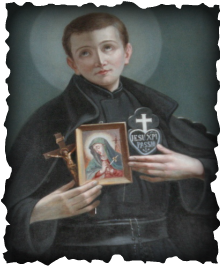
 On a summer day a little over a hundred years ago, a slim figure in a black cassock stood facing a gang of mercenaries in a small town in Piedmont, Italy. He had just disarmed one of the soldiers who was attacking a young girl, had faced the rest of the band fearlessly, then drove them all out of the village at the point of a gun. The young man was Francesco Possenti, whose father was lawyer for the Papal States and who had recently joined the Passionist Order, taking the name of Brother Gabriel. Francesco Possenti had been the fanciest dresser in town as well as the best dancer. He was a superb horseman and an excellent marksman. Engaged to two girls at the same time and a great partygoer, he had shocked his family by announcing after his graduation that he was going to become a Passionist monk. No one believed him and expected him back within a few weeks. He stayed, and when Garibaldi's mercenaries swept down through Italy ravaging villages, Brother Gabriel showed the kind of man he was by confronting them, astonishing them with his marksmanship, and saving the small village where his monastery was located.
1 Comment
As we end this month, we would like to thank Most especially The Almighty God for the success of our activities this month. We Hope that Our Lord will continue to guide all our activities and bless all our efforts for the Greater glory of his Name. Also, we would like to thank the Universal Living Rosary Association of St. Philomena for donating some of their rosaries, scapulars and other sacramentals to us for our on-going mission. Let's once again remember the events that Happened recently namely: The Feast of the Holy Face of Jesus, Veneration of the Relic of St. Geltrude Comensoli, Ash Wednesday and the Visit of the Pilgrim Relic of St. Therese at our diocese. For more photos please visit our official Facebook fanpage http://www.facebook.com/ajpmclm
Ad Majorem Dei Gloriam! 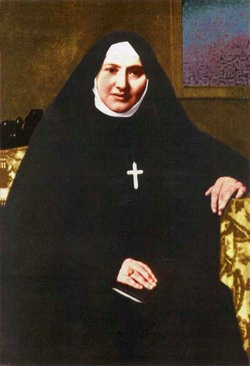 GELTRUDE COMENSOLI was born in Bienno in Val Camonica, Brescia, on January 18, 1847, the fifth of ten children. On the same day of her birth, her parents, Carlo and Anna Maria Milesi, took her to the parish Church to be baptized and she was given the name of Caterina. During her childhood, Caterina experienced the joys of innocence and light-heartedness typical of that age. However, the Lord instilled within her the necessity of being intimately united to Him: she was often drawn by a strong desire to pray and meditate deeply. To those who asked her what she was doing she would answer: “I am thinking”. At the age of seven, unable to resist any longer the pressing invitation of Jesus, one day, in the very early morning, she wrapped herself in her mother’s black shawl and went to the nearby Saint Mary’s Church. Standing at the balustrade, she secretely made her First Communion. Caterina experienced a “heavenly” feeling and swore eternal love to Jesus. The child became more serious, meditative and more absorbed in the thought of Jesus present in the Eucharist who, she realized, was often left alone for many days. While still young, she became an Apostle of the Eucharist: she would have liked to take Jesus present in the Holy Sacrament onto the top of a high mountain so that everyone could see and adore Him. She chose some among the girls she knew to establish the Guard of Honour. Her ideal was Jesus. The motto: “Jesus, loving You and making others love You”, became the programme of her life. Attracted by a more perfect life, she left her family in 1862 and joined the convent of the Sisters of Charity, founded by St. Bartolomea Capitanio in Lovere, Brescia. Everyone had the highest hopes for her but the wonderful and mysterious ways of Providence were different. The Postulant became seriously ill and was dismissed from the Institute. After her recovery, she left her village due to the financial situation of her family and, surely not by chance, entered into domestic service, first with Rev. G. B. Rota, parish priest of Chiari, who a few years later was to become the Bishop of Lodi, and afterwards with the Countess Fé-Vitali. These meetings and experiences were to be very important to Caterina. During the Christmas season of 1876 she reaffirmed her dedication to Jesus and wrote a very demanding way of conducting her life, to which she remained faithful. On the Feast of Corpus Christi of 1878, with the permission of her confessor, she made the vow of chastity, which she had made on the morning of her secret Comunion, perpetual. Without neglecting her duties as a domestic servant, Caterina decided to educate the children of San Gervasio, Bergamo, guiding them towards an honest life of christian and social virtues. By means of assiduous prayer, mortification, an intense interior life and the practice of the deeds of charity, Caterina prepared herself to accept the will of the Lord. Freed from family responsibilities after her parents’ death, the young woman sought a way to achieve her Eucharistic ideal. She opened her heart to the Bishop of Bergamo Mgr Speranza, who was, at that time, in Bienno as a guest of the Fé-Vitali’s. He encouraged and assured her that her plans were the will of God. In 1880, while in Rome with the Fé-Vitali’s, she succeeded in speaking with Pope Leo XIII about her plans to establish a religious institute devoted to the adoration of the Eucharist. The Pope changed them by inviting her to include the education of young female factory workers as well. Supported by the new Bishop of Bergamo, Mgr Guindani, and by her “Father and Superior”, Rev. F. Spinelli, on December 15, 1882, Caterina, together with two of her friends began the Congregation of the Sacramentine Sisters of Bergamo with the first adoration hour of the Blessed Sacrament. On December 15, 1884 she took the name of Sister Geltrude of the Blessed Sacrament. The new Congregation revealed itself to be God’s work. In fact, like all God’s work, it endured many adversities which sorely tried the “tender little plant”. However, this plant had already spread its deep roots into the rich soil of prayer, mortification and humility. It mattered little that Sister Geltrude and her Sisters, advised by the Bishop of Bergamo, Mgr Camillo Guindani, successor to Mgr Speranza, had to abandon their first “nest” in order to take refuge in Lodi. Mgr Rota, Bishop of Lodi, welcomed them and generously gave them a house in Lavagna di Comazzo, which temporarily became the Mother House of the Institute. When innumerable difficulties had been overcome, Mgr Rota, with the Decree of September 8, 1891, gave canonical recognition to the Institute. On March 28, 1892, Mother Geltrude returned to Bergamo, the birthplace of the Congregation. There she gave it decisive and strong direction. God’s work was fulfilled! The Foundress had guaranteed by then the continuation of the perpetual and public adoration of Jesus in the Blessed Sacrament and had instilled her precious ideas into her Sisters. Hers was a spirit of prayer, sacrifice, mortification, obedience, humility and charity mainly towards the poor. Therefore, she could approach her godly Bridegroom. On February 18, 1903, at midday, Mother Geltrude, bowing her head towards the Church of Adoration, began her eternal adoration. The news of her death quickly spread. Those who had known her, especially the poor and the humble, who were her favourite people, declared her a saint. On August 9, 1926, her venerable remains were taken from the cemetery of Bergamo to the Mother House of the Institute which she had established. There she lies in a special chapel next to the Church of Adoration. 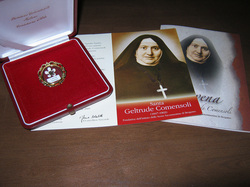 Relic of St. Geltrude under our custody By request of numerous people, on February 18, 1928, the Ordinary Process on the reputation of Mother Geltrude’s sanctity, her virtuous life as well as miracles, granted by God through Mother Geltrude’s intercession, began. It ended in 1939. In the same year, Pius XII authorized the preliminary investigation of the Apostolic Process in the Cause of Mother Geltrude. On April 26, 1961, the General Congregation of the then Congregation of Sacred Rites was held in the presence of Pope John XXIII. His Holiness promulgated the Decree on the heroic virtuous life experienced by Mother Geltrude Comensoli, who was then given the title of “Venerable”. On October 1, 1989, Pope John Paul II declared her a Blessed Soul. On April 26, 2009 Pope Benedict XVI entered her on the register of Saints. 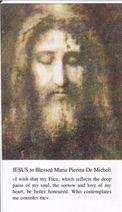 Jesus, covered in blood and much sadness, said to Mother Pierina: "See how much I suffer. I am understood by so few. What ingratitude on the part of those who say that they love Me! I have given My heart as a sensible object of My great love for man, and I give My Face as a sensible object of My sorrow for the sins of man. I desire that it be honored by a special feast on Shrove Tuesday. The feast will be preceded by a novena, during which the faithful make reparation with Me, uniting themselves with My sorrow." This year, the feast occurs on February 12, 2013 (Shrove Tuesday); thus, the nine-day Alpha Omega novena begins on Sunday, February 3, 2013. For the Novena Click this link: http://www.holyface.org.uk/content/holyfacenovena.htm |
Archives
May 2016
Categories
All
|


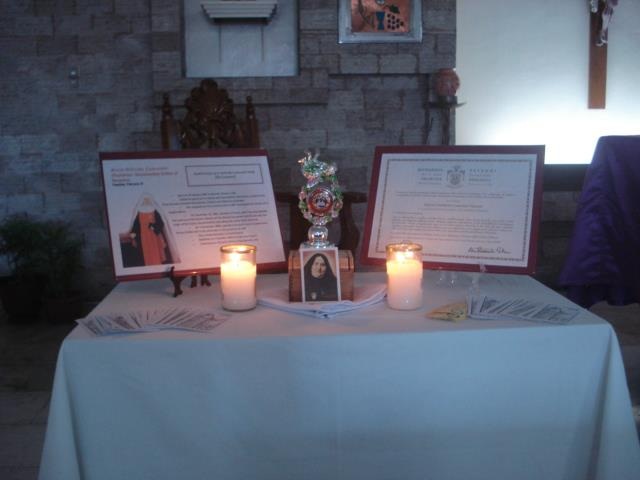
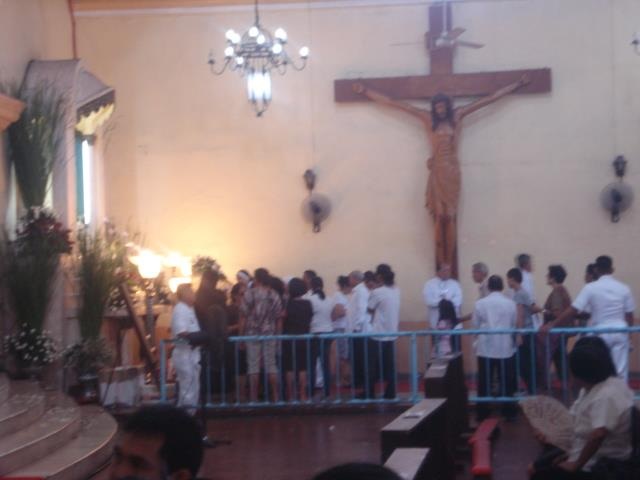
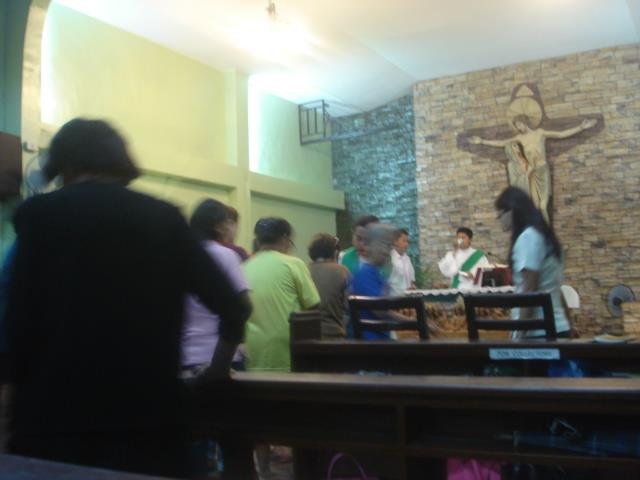
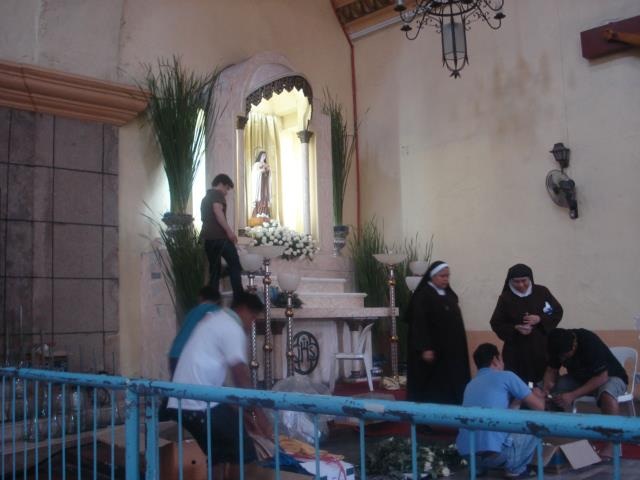
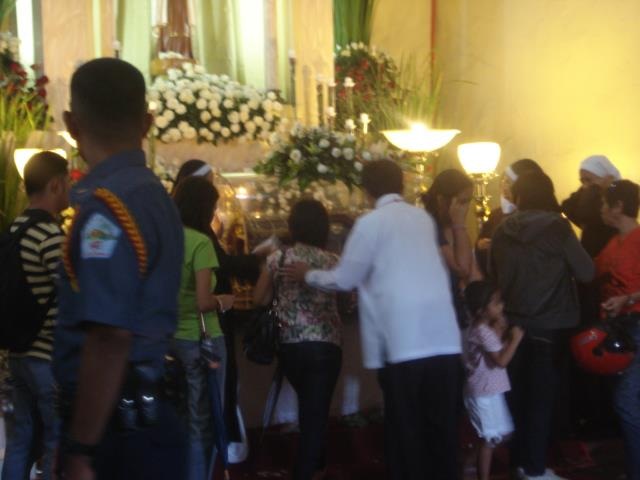
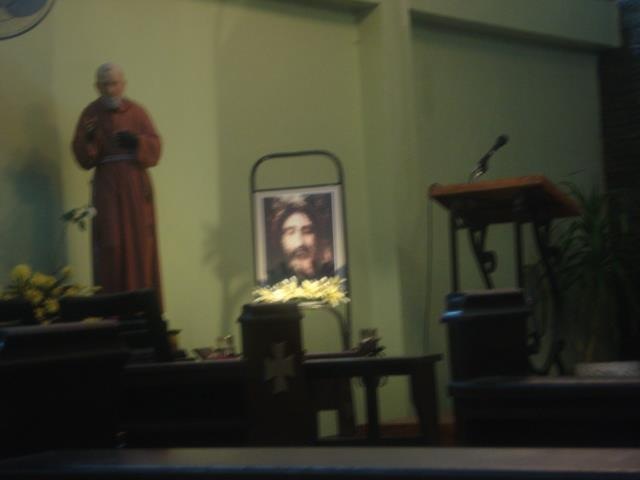
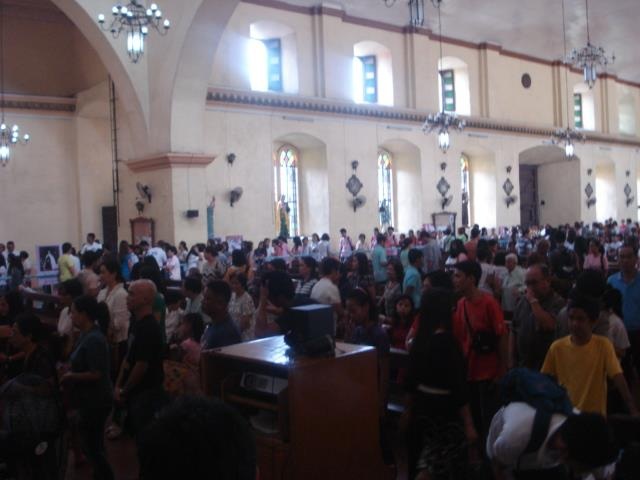
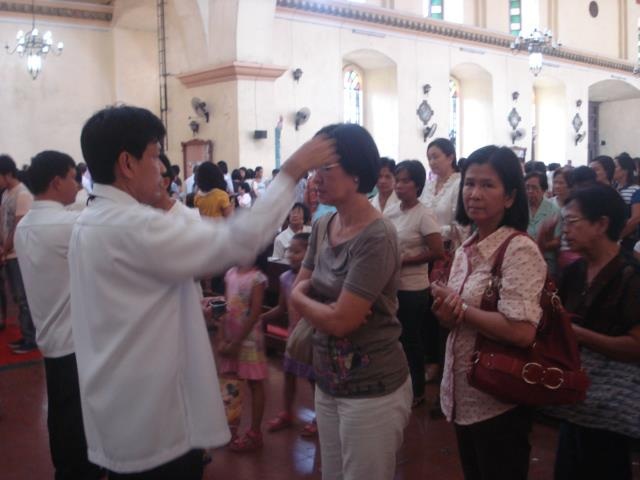
 RSS Feed
RSS Feed
